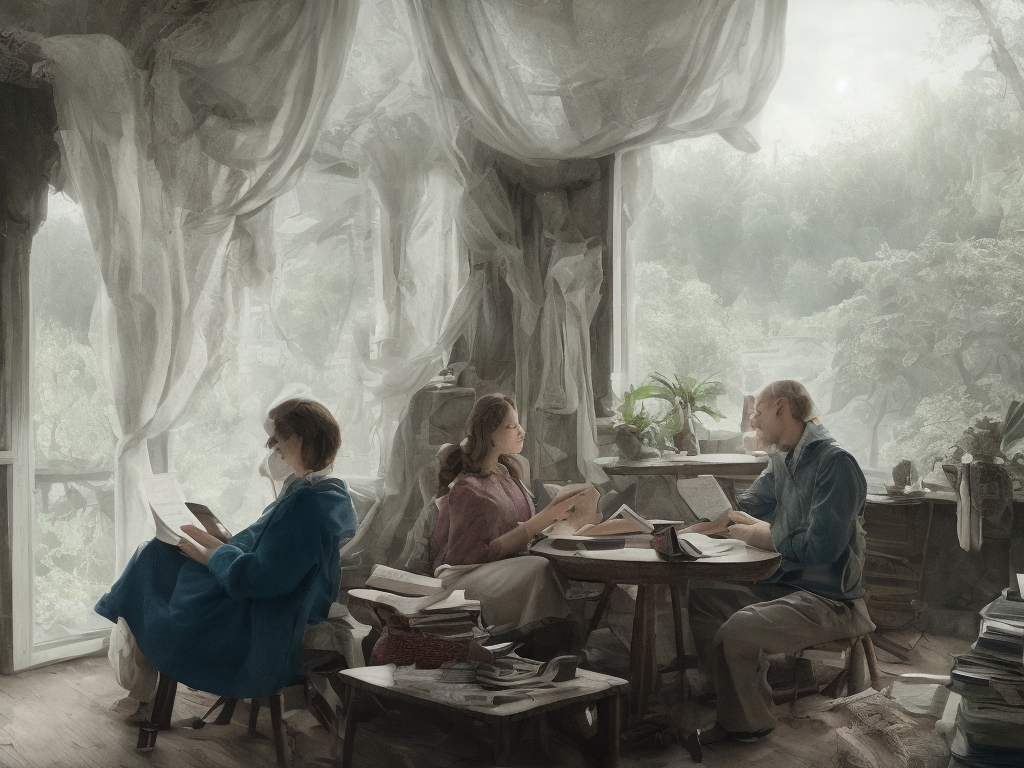
Narration and description are two literary techniques commonly used in storytelling or writing. Both of these techniques are essential in creating a piece of literature, and understanding the difference between them is crucial in properly using them in writing. In this article, we will explore the difference between narration and description in literature and how each is used in story writing.
Narration refers to the technique of telling a story. It describes the sequence of events that unfold in a story, often including dialogue, action, and characters. It is the backbone of a story, and the writer uses it to guide the reader through the plot. Narration can be further divided into three types: first person, second person, and third person narration.
First-person narration refers to when the protagonist or another character in the story tells the story. It uses pronouns like “I” and “we” to convey the story, and the reader is often privy to the character’s inner thoughts and emotions. This type of narration is common in the memoir genre, where the author tells their own story.
The second-person narration is when the narrator refers to the protagonist as “you.” It is not common, but when used, it creates a direct and personal connection between the reader and the story. This type of narration is often used in interactive fiction, where the reader is given choices to determine the protagonist’s actions in the story.
The third-person narration is when the narrator tells the story from an outsider’s perspective. The narrator uses pronouns like “he,” “she,” and “they” to describe the protagonist and other characters. In this type of narration, the reader is an observer rather than a participant in the story.
On the other hand, description refers to the technique of painting a mental picture of characters and settings in a story. It uses adjectives, metaphors, similes, and other literary devices to create a vivid impression of the scene being described. Description is essential to creating a story’s atmosphere, tone, and mood.
Description can be divided into two types: objective and subjective. Objective description is when the writer uses facts and impartial observations to create a mental picture of a scene. It is devoid of personal opinions, emotions, and any interpretation of the setting, character, or situation. Objective description aims to describe something as it is, without any embellishments.
Subjective description, on the other hand, is when the writer imbues the setting, character, or situation with personal feelings, emotions, or opinions. It is biased and subjective as it describes something from the writer’s perspective. The reader is expected to see the scene or character as the writer sees it, and the language used is often emotive and persuasive.
To understand the difference between narration and description better, let us examine an example. In a story about a man walking his dog in the park, narration would be telling what happens on the walk. It would describe the events that unfolded on the walk, like encountering another dog or picking up litter. Description, on the other hand, would paint a mental picture of the surroundings. It would describe the lush green grass, the chirping of birds, the fountain in the middle of the park, and the colorful flowers in the garden.
Narration and description are often used together in storytelling to create a complete and captivating picture for the reader. By using narration to move the story forward and description to create the setting and characters, the combination gives the reader a complete and whole understanding of the story.
In conclusion, narration and description are two essential literary techniques that are used to create a cohesive and complete picture for the reader. Narration is the art of telling a story, while description is painting a mental picture of the characters and surroundings. Narrative techniques can be broken down into first-person, second-person and third-person narratives, each with its specific use. Description can also be divided into objective and subjective descriptions, which use different styles and techniques to create a mental picture. Understanding the difference between narration and description is essential to become a better writer and create captivating stories.
 Self-Instruct
Self-Instruct